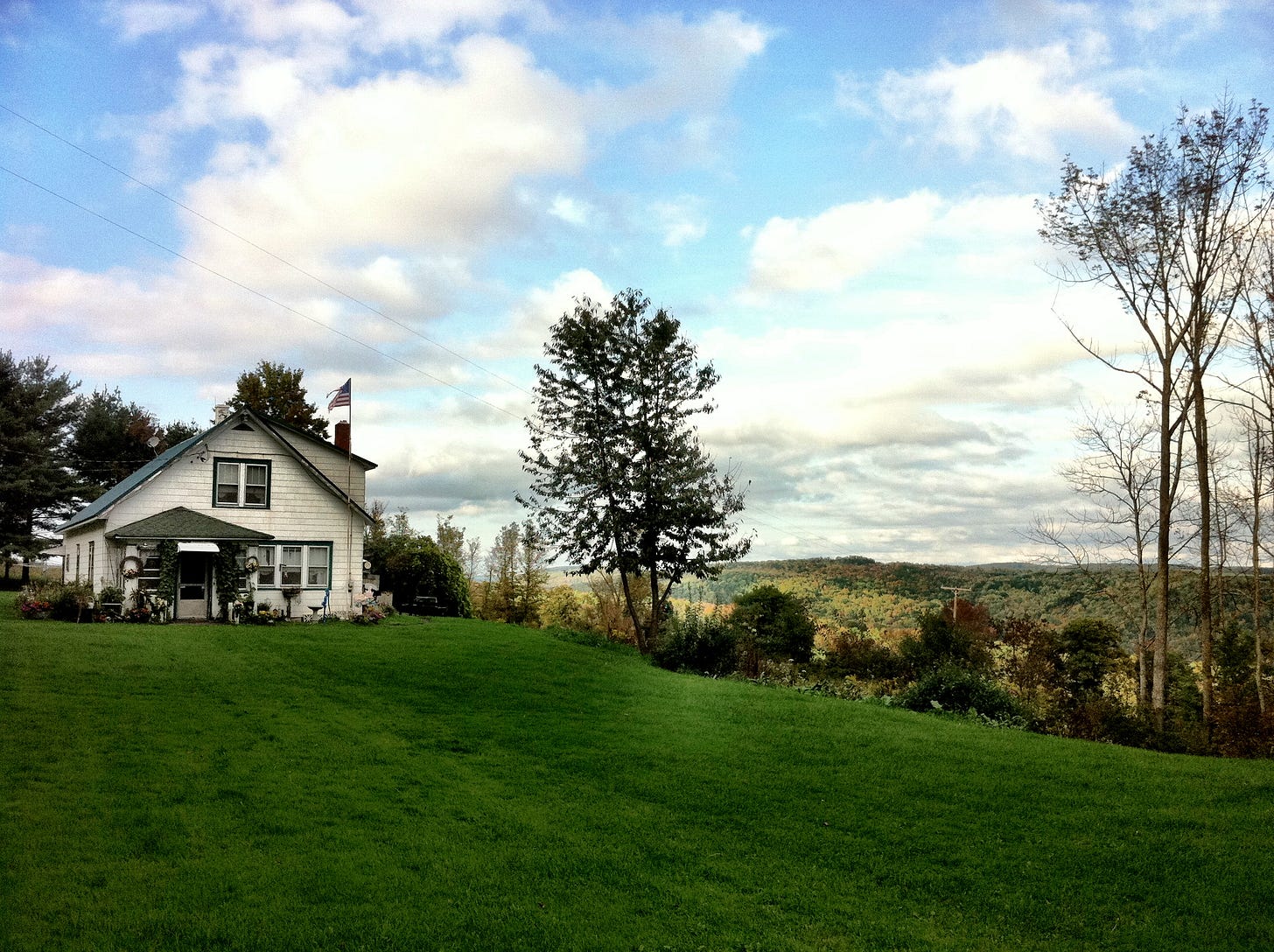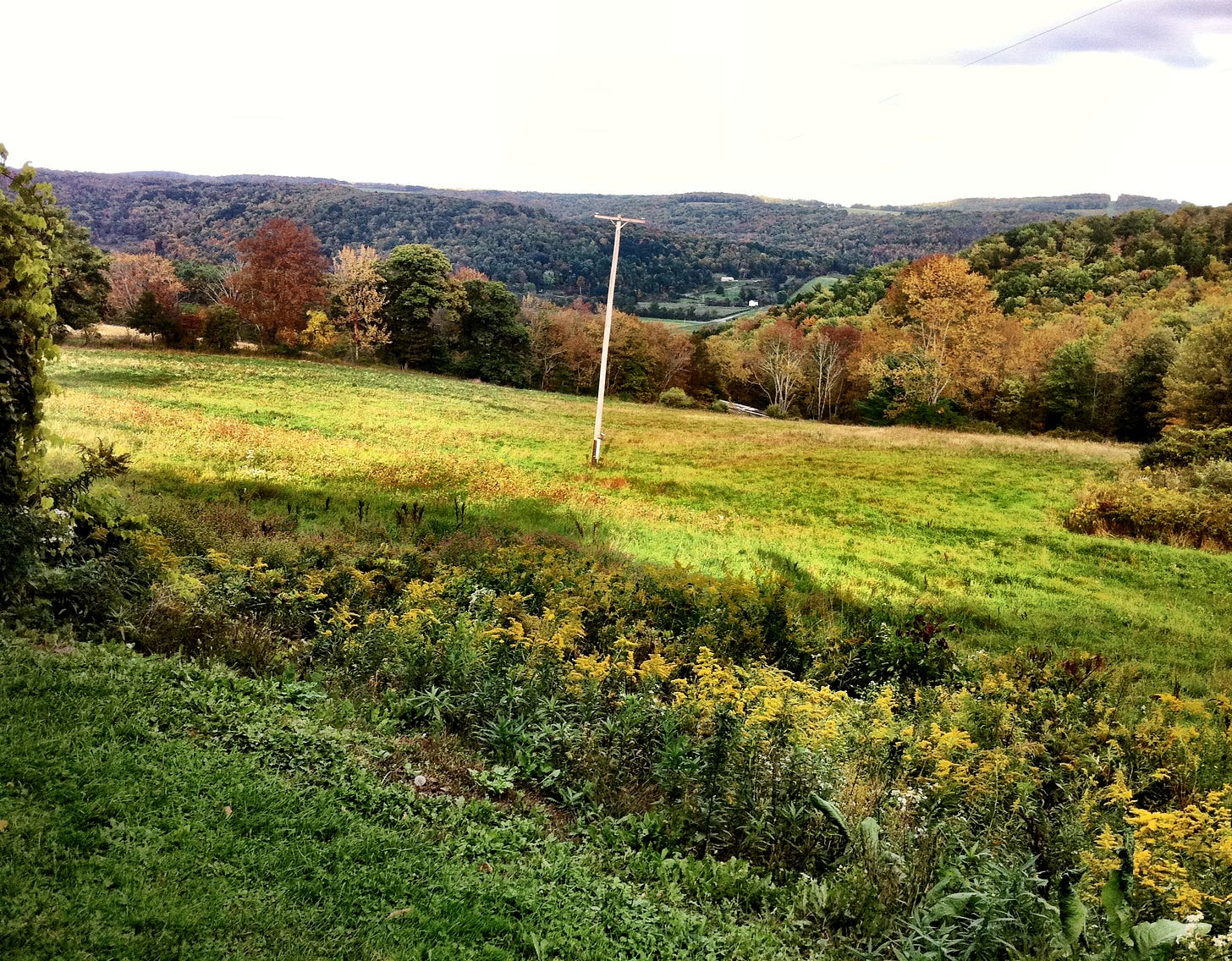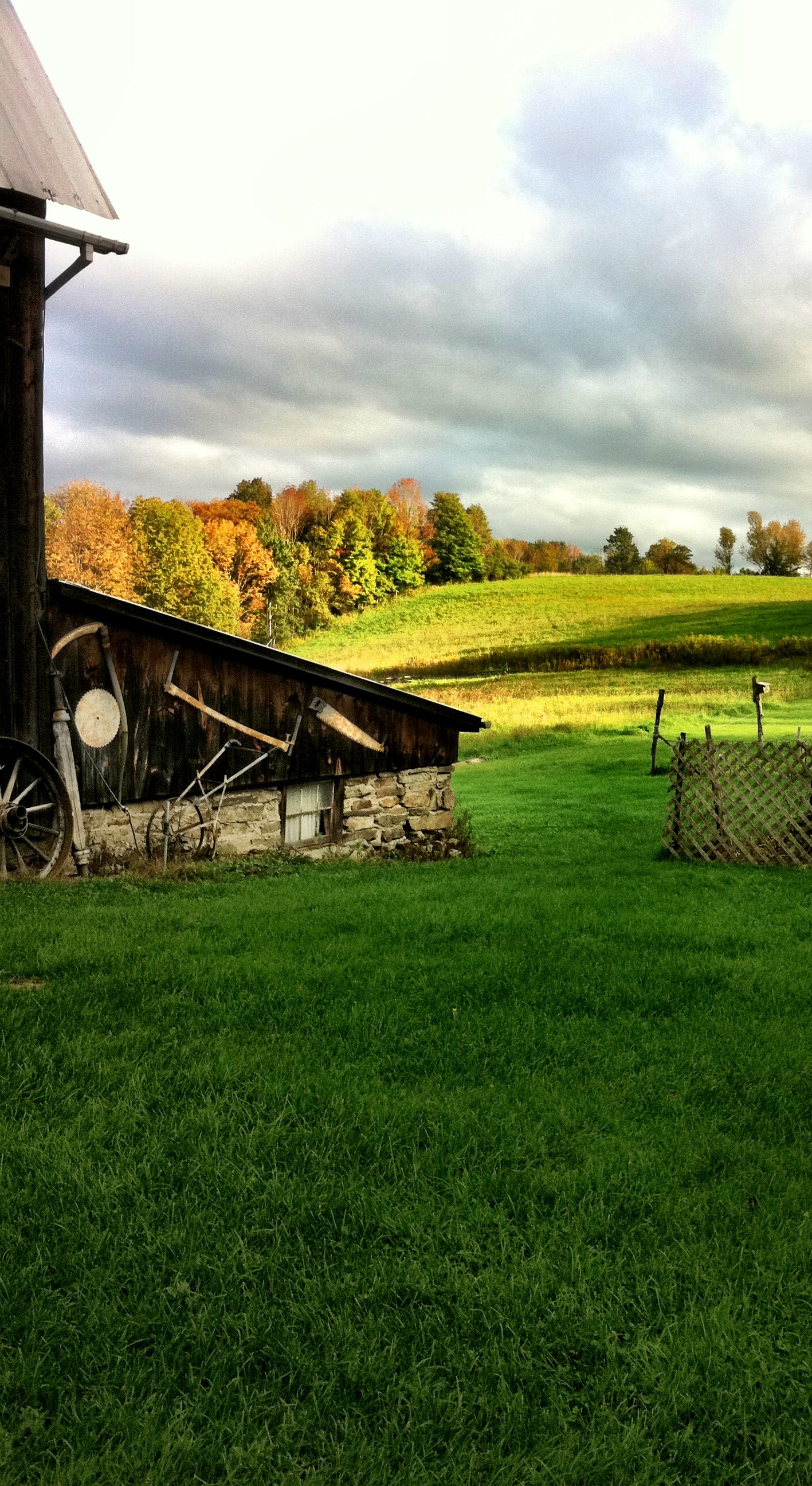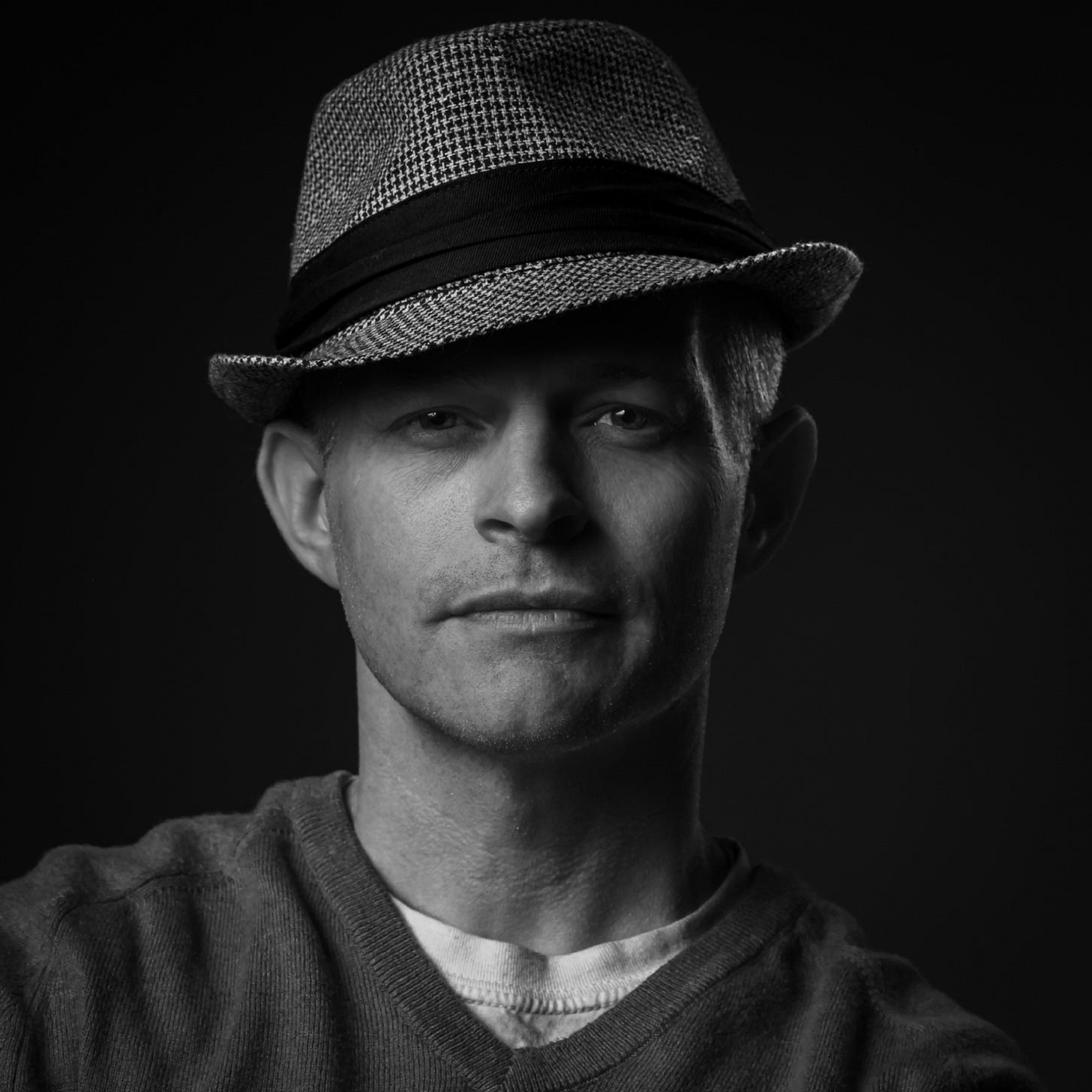I grew up on a farm. Life and death were visible virtually every day. Baby sheep were born in the wee hours of the night. Predators would maul lambs in the afternoon. There was no buffer between creation and destruction—just the raw, relentless cycle of gain and loss, birth and decay, joy and grief. The farm was a living thing, always in motion, always trading one kind of life for another.
I remember playing with a grey barn kitten one evening as the sun dipped behind the hills on a late autumn day. The air had that crisp, coppery smell of fallen leaves and distant woodsmoke. The next morning, with frost on the ground and the grass crackling under my boots, I came across the mother cat eating the tiny grey kitten, which had likely frozen to death overnight.
Like I said: life and death were part of daily life on the farm.
Our farm sat high in the mountains of upstate New York, near the place where Otsego and Delaware counties meet. The land sloped in long, soft ridges, hemmed in by sugar maples and white pines. In summer, the fields rippled gold with hay; in winter, the wind howled through the eaves and coated everything in rime. Our gravel driveway wound for more than a mile through thick woods—too steep for most cars without chains or four-wheel drive in winter. From the top pasture, you could look out and see the whole valley laid out below like a map—green and quiet, stitched together with stone walls, hedgerows, and narrow dirt roads.
One day, we found a horse down in the pasture. Her name was Sable, and she was very old—at least eighteen, if memory serves. She’d been having health issues for some time. Her owner always brushed them off.
She’s a good old girl, she’d say, waving a hand.
She’ll be galloping again once her leg heals.
But I remember the look on other people’s faces when she said things like that—a mix of discomfort and quiet sorrow. The owner couldn’t—or wouldn’t—accept that the horse was in decline, and that no amount of optimism would stop it. Each issue worsened with time, yet her cheerfulness only deepened, like a shield raised higher against what she couldn’t bear to face.
The day we found Sable down, the sun was high and hot, baking the field in late-summer stillness. The air smelled of dust, sweat, and dry grass. The sheep grazed nearby, their bells clinking softly, tails flicking at flies. The drone of cicadas echoed from the trees, and the only breeze came in faint sighs that rustled the tops of the goldenrod.
The veterinarian arrived in her tan Jeep Cherokee, its exterior covered in dents and streaks of dried mud. Last time I’d seen it, it had snow chains on its tires—essential for navigating our mile-long gravel driveway in the hills when the ice set in. The horse’s owner pulled in around the same time, stepping out of her blue Volvo and standing silently beside it with the door still open. She watched as the vet quickly assessed the horse and moved to raise her to her feet.
Horses are prey animals—built to stand and to run. When they go down and can’t get up, it’s often fatal. The weight of their own bodies starts working against them. Circulation slows. Organs begin to shut down. If they lie down too long, even strong horses can reach a point of no return.
My father, my mother, and one of the farmhands worked with tarps and ropes, trying every method they knew to lift her. The vet administered fluids. Nothing helped.
Our neighbor from down the hill, Mr. Poole, appeared out of nowhere, rattling in on his old Farmall tractor, the engine coughing and sputtering like it might die any second.
He was a wiry man, built of sinew and grit, with hands like old walnut and skin weathered by sun and wind. Mr. Poole was a Scottish immigrant, smelled faintly of clove cigarettes, scotch, and machine oil. He wore denim bib overalls year-round, and a black watch cap always on his head, even in summer. He carried a flask in his chest pocket, swore like a sailor, and coughed like a lifelong smoker. His jokes were crude, his laugh even worse—but he was the most reliable neighbor a farmer in the mountains could have. If something was broken, Mr. Poole would fix it. If someone was in need, he just showed up.
But this time, there was nothing to fix.
Sable wouldn’t rise. Her breath came in heavy gasps. The vet knelt beside her, shaking her head. Her vitals were weak. Her body was failing. The vet suspected stomach cancer—advanced, likely bleeding internally. Even if she did stand, it would only prolong her pain.
Still, the owner stood off to the side, arms crossed, clutching her optimism like a talisman.
Just give her the dextrose, she said again, her voice tight but smiling.
She’ll get up. You’ll see—she always does.
The vet looked to the rest of us—silent, worn out, and helpless.
That’s when Mr. Poole cleared his throat.
Lass.
His voice was low, rasping.
He took one slow step forward, boots crunching the dry grass. His hands were tucked under the flap of his overalls. He looked the woman square.
Ye love her, aye?
She froze. Her shoulders tensed. She didn’t answer.
He gave a slow nod.
Then ye ken what needs doin’. We’ve tae let her go.
The silence held. A wind stirred in the valley below. His voice softened.
That’s how we love them, now. Not by holdin’ on. By lettin’ go.
The woman stood stock still, her expression unchanged. Then, in a flash and without warning, she collapsed to the ground, weeping and sobbing openly. I remember watching in surprise, unsure if her tears were connected to what was happening, or if something else had caused her to cry. The change was so sudden, so complete, it felt like an eruption—like the sorrow she had buried for years had clawed its way to the surface. My mother knelt by her side and wrapped her in a trembling embrace, crying with her while the men stood nearby in quiet reverence, their hats in their hands, their heads bowed.
The owner crawled to Sable’s side, pressing her face into the mare’s flank. Her sobs became a low, aching wail. The vet knelt down opposite her, murmured something gentle, and then—without ceremony—slipped the needle into Sable’s heart.
Cries echoed across the open field, rising and falling with the breeze, carried to the edge of the woods. The sun had dipped low by then, and the treetops were ablaze with the amber light of late afternoon.
A mournful wail rang out, wretched and anguished.
And then it was over.
I didn’t understand it at the time, but I’ve since come to recognize the weight of what she was carrying—the dissonance between what we hope is true and what we know deep down. I’ve carried that moment with me ever since—it’s one of the most poignant memories of denial I have.
The Cost of Alignment
I’ve been in therapy for a few years now—long enough that it no longer feels like therapy. It’s just another part of my routine. I wake up to my alarm. I do my exercises. I brush my teeth. I unload my deepest fears and childhood trauma onto a paid professional. I make coffee.
The central theme to my therapy for the past few years has been living in authenticity. I have discovered that virtually all of my troubles ultimately stemmed from being out of alignment with myself. Sure, I could wave a hand at my brain scans and excuse away my shortcomings and nasty behaviors. I could hide behind PTSD. I always had a ready-made explanation for my anger, my distance, my irritability—always one that painted me in a favorable light: the tortured poet, the unappreciated genius, the war-torn Marine.
So yeah, the concept of denial comes up a lot.
And it turns out that making life changes that are genuine and lasting—true recovery—demands something I never anticipated.
It demands honesty. Not just casual honesty. Rigorous honesty.
Before we can be authentic with others, we have to learn how to be honest with ourselves—even when it hurts. Without the clarity that comes from being honest with ourselves, we can’t really live in alignment. How do you align with something you can’t even see?
Sure, there are easier, softer ways to get through a career, a marriage, a difficult time in life. We can hide behind convenient narratives, or remain silent and pretend we don’t feel the way we feel. We can deny ourselves in some heroic gesture of sacrifice and call it love. And those techniques work—to a point. But without authenticity, love becomes something else: pretense, pretending, and pressure.
But living in alignment with oneself isn’t a panacea. The cost of authenticity is steep. It asks us to face what we’d rather avoid: the breaking of illusions. We may make decisions that are true to who we are but that others resist or reject. We may cause discord. We may disappoint people. We may have to choose between preserving a fragile harmony or pursuing a deeper, truer peace.
Because real alignment doesn’t always look like balance from the outside. Sometimes it requires opening the curtains and letting what’s been hidden finally come to light.
The real thing asks more of us.
It asks us to let go, and accept whatever that entails.
To seek the serenity to accept the things we cannot change, the courage to change the things we can, and the wisdom to know the difference.
I strive to be honest with myself today, because I, like Sable’s owner, have crumpled under the weight of denial, and collapsed under the burden of an inauthentic self. I have felt the pitiful and incomprehensible demoralization of living out of alignment.
Sometimes choosing alignment means choosing what is right for me, not what makes others happy. Sometimes choosing alignment means conceding that I don’t know what is best, and letting go of the need to perfect everything I touch.
And sometimes, choosing alignment simply means staying true—quietly, humbly—no matter who understands it or not.
About The Author
ES Vorm, PhD is a former military aviator and research psychologist who now writes about recovery, fatherhood, and the quiet work of becoming whole. He lives a slower life these days—homeschooling his kids, writing random essays, and learning to stay present for the life he used to outrun. His writing explores the intersections of trauma, grace, and what it means to live in alignment with yourself.








